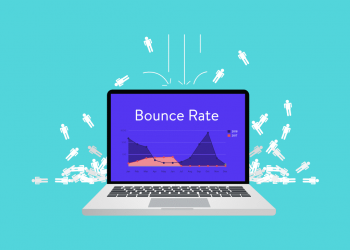What is bounce rate is the share of visitors who left your site/webpage in the entry point without doing any activity. Activity would mean clicks made & pages visited. High bounce rate indicates that the content presented or way it turned out presented had not been relevant for the entrance options.
Visitors landing in your entry page are considered to bounce if they:

Close the window or an open tab
Types a whole new URL
Leave the web page by clicking the BACK button
Click a web link on the page that takes them to a different site.
Or the Session timeouts (generally taken as 30 mins)
Why everyone is looking for ways to lower Bounce Rate?
The fact is simple - The lower the bounce rate, higher the opportunity of visitor browsing your internet site pages and converting.
Google.com analytics specialist Avinash Kaushik has told you:
"It is really hard to get a bounce rate under 20%, anything over 35% is cause for concern, and 50% (above) is worrying."
Now, greater question is - How to control the Bounce Rate?
Content - The content available on your own website is the key factor for bounce rate. If this content is relevant to the visitors expectations the likelihood is that they is not going to bounce from your site without visiting other sections of website. For E.g. if your web site is about IT Conferences and also on landing page you're talking about general stuff and not educating the visitors for the benefits of attending your conferences, then readers are more likely to leave your site due to lack of desired information.
Website Load Time - Try to slow up the website load time - It's really hard to find patient visitors. Instead of using heavy animations for the complete page that can take lot of time to load, use animation only within the banner area and present text content in remaining the main page. This will make user read the information and within the mean time your animation will likely load.
Flow - Provide any visitors with proper entry points to find their way. Do proper linking on the internal pages that guide these to their regions of interest. Most of the visitors bounce given that they were not able to navigate to relevant pages. Make your navigation flow user-friendly by categorizing and sub-categorizing.
Above the fold - All your information has to be placed 'above the fold'. This includes your 'call to action buttons'. 'Above the fold' is that part of the website that you see with no scroll. Research states that 60% - 80% of visitors will not likely scroll your internet site 'down the fold', therefore the best opportunity is lying 'above the fold'.
Popups - No one likes Popups, particularly if then appear as a possible unwanted guest. They are the biggest distraction, when a visitor is seeking some information. Even the feedback popup, sometimes annoys the visitors and they bounce.
The previously listed points can definitely help you reduce your internet site bounce rate
We at AfterTheNet - The Web Strategy Company follow the previously discussed keyword tactic to supplement our clients most abundant in basic to the most advanced methods for any goal they decide to reach making use of their website. Our step wise approach provides them the complete visibility with their website - that they are without the benefit of very often, in lack of a trustworthy resource.
Comments on “Understanding Bounce Rate”